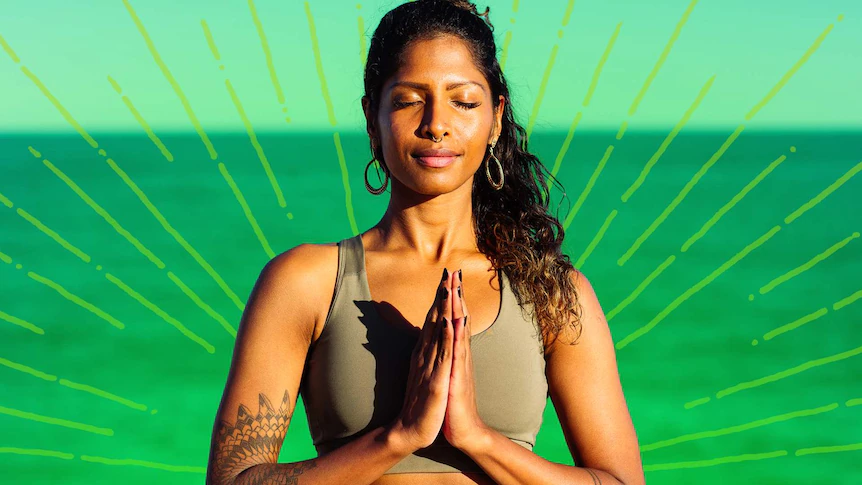1. Start with Breathing Exercises (Pranayama):
- Sit comfortably, spine erect.
- Practice deep breathing: inhale deeply through your nose, filling your lungs, and exhale slowly through your nose or mouth.
2. Basic Yoga Poses for Flexibility:
- Child’s Pose (Balasana):
- Kneel on the floor, sit back on your heels, and stretch forward with arms extended.
- Downward-Facing Dog (Adho Mukha Svanasana):
- Form an inverted “V” shape with your body, hands and feet on the ground, hips high.
- Forward Fold (Uttanasana):
- Stand with feet hip-width apart, bend forward from your hips, and reach for your toes or shins.
- Cobra Pose (Bhujangasana):
- Lie on your stomach, hands under your shoulders, and lift your chest while keeping your lower body on the ground.
3. Focus on Alignment and Form:
- Ensure proper alignment in each pose to avoid injury and gain maximum benefits.
- Follow online tutorials, use mirrors, or attend beginner classes to understand correct posture and alignment.
4. Consistency is Key:
- Practice regularly, even if it’s for a short duration initially.
- Aim for a routine that suits your schedule—start with 10-15 minutes and gradually increase the duration.
5. Listen to Your Body:
- Respect your body’s limits. Don’t force yourself into positions that cause pain.
- Modify poses by using props (blocks, straps) or opting for gentler variations.
6. Warm-Up and Cool Down:
- Always warm up before diving into deeper stretches to prevent injuries.
- Include cool-down stretches at the end of your session to relax your muscles.
7. Stay Patient and Persistent:
- Flexibility improvements take time. Don’t get discouraged if you don’t see immediate results.
- Celebrate small progressions and be consistent in your practice.
8. Yoga Classes or Apps:
- Join beginner-friendly yoga classes or use apps specifically designed for beginners to learn and practice.
9. Hydrate and Eat Well:
- Stay hydrated throughout the day and ensure a balanced diet to support your yoga practice.
10. Seek Guidance:
- If possible, seek guidance from a certified yoga instructor, especially in the beginning stages, to ensure correct form and technique.
Final Tips:
- Patience is Key: Flexibility doesn’t happen overnight; consistency and patience are crucial.
- Enjoy the Journey: Yoga is not just about physical flexibility; it’s also about mental relaxation and well-being.
Remember, yoga is a journey that goes beyond physical flexibility. It’s about connecting your mind, body, and breath. Enjoy the process and the newfound flexibility that comes with it!
Free Speech and Alternative Media are under attack by the Deep State. Real News Cast needs reader support to survive. Please Contribute via GoGetFunding



